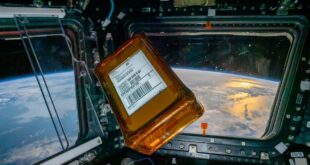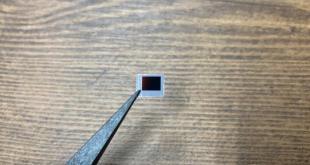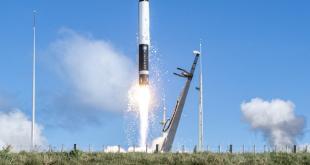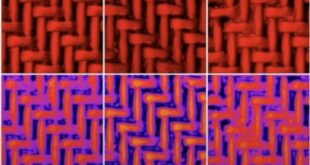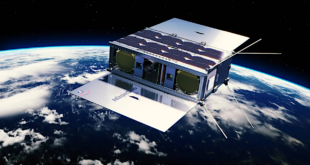Japan Manned Space System Corporation (JAMSS) used an Amazon Web Services (AWS) Snowcone SSD onboard the International Space Station (ISS) to transmit large volumes of data from space into AWS.
Read More »Search Results for: Japan
NASA Launches Multinational Crew-7 to the ISS
NASA has launched an international crew of four representing four countries into orbit following a successful launch to the International Space Station at 3:27 a.m. EDT Saturday, Aug. 26, from Launch Complex 39A at NASA’s Kennedy Space Center in Florida. The Agency’s SpaceX Crew-7 mission is the seventh commercial crew rotation mission for NASA.
Read More »IDDK and MBRSC Announces Strategic Alliance
IDDK and the United Arab Emirates’ Mohammed Bin Rashid Space Center (MBRSC) have signed a Memorandum of Understanding (MoU) to strengthen cooperation in providing space bio-experiment services using One-Chip Microscopic Observation Technology (MID). This partnership aims to offer space bio-experiment services using IDDK’s microscopic observation technology to UAE researchers and scientists and also to spread this service to other countries.
Read More »Rocket Lab Signs Dedicated Launch Deal with iQPS
Rocket Lab USA, Inc. has announced that it signed a deal to launch an Earth observation satellite on Electron for the Institute for Q-shu Pioneers of Space, Inc. (iQPS), a Japan-based Earth imaging company. The mission will tentatively lift off in September 2023 and will carry iQPS’s QPS-SAR-5 satellite "TSUKUYOMI-I" into orbit. Furthermore, it will be a dedicated Electron mission and launch from Rocket Lab Launch Complex 1 in Mahia, New Zealand. iQPS named the mission "The Moon God Awakens" in acknowledgement of Tsukuyomi, the Japanese God of the Moon.
Read More »#SpaceWatchGL Summer Reading: The Wonders of Micro-G Medicine 4
As reviewed in Part 3, LambdaVision, based in Farmington, Connecticut, USA, was founded in 2009 by its President and CEO Dr. Nicole Wagner and co-founder chemist Jordan Greco. Dr. Robert Birge, distinguished chair in chemistry at the University of Connecticut, a renowned expert in the incorporation of light-activated proteins into biomolecular electronic and therapeutic applications, is a Member of the Board of Directors of the company.
Read More »Worldwide space partnerships to boost UK innovation
The UK Space Agency announced on the 8th of August the recipients to receive the first phase of its £20 million International Bilateral Fund investments. These investments are intended to help UK organisations to link up with the US, Canada, Australia, Japan, India, Singapore, South Africa and form collaborations that will progress space research and investment in new technologies. The International Bilateral Fund is the Agency’s first fund dedicated to building and strengthening international relationships to help advance the UK’s goals in space. Some projects will focus on enhancing relationships to unlock future economic opportunities for the UK, and others will focus directly on science missions and technologies with strong commercial potential.
Read More »#SpaceWatchGL Summer Reading: The Wonders of Micro-G Medicine 3
Blindness due to retina diseases affects over 200 million people globally, and that number is expected to reach 290 million by 2040. The two most common retina degenerative diseases are called Retinitis Pigmentosa and Age-related Macular Degeneration (AMD). Retinitis Pigmentosa affects one and a half million people globally. It starts with peripheral vision that goes dark, until the person is completely blind. AMD affects in the US alone 30 million people over 55, including 10 million in the blinding stage. AMD starts with central vision that goes dark, until the person is totally blind.
Read More »RIKEN and others collaborate to launch NinjaSat X-ray observatory
RIKEN, Japan’s largest research institution, Mitsui Bussan Aerospace, and Kongsberg NanoAvionics announced on the 7th of August their collaboration on the NinjaSat1 X-ray observation mission. The aim of this two-year mission in low Earth orbit (LEO) is to observe X-ray photons from bright X-ray objects in the universe. The NinjaSat team intends to observe black holes and neutron stars that brighten suddenly in X-rays and coordinate with on-ground optical observatories to study how matter accretes to these compact objects.
Read More »Warpspace Selected for NEDO’s “SBIR Program” for FY2023
Warpspace has announced that the National Research and Development Agency New Energy and Industrial Technology Development Organization (NEDO) has accepted its proposal, "Development of a modem and router to realize a multi-protocol platform for optical communications in space," for the Japanese "SBIR Program" (one-stop-shop type) for fiscal year 2023.
Read More »@SpaceWatchGL Summer Reading: The Wonders of Micro-G Medicine 2
The moment the decommissioned ISS burns through re-entry and plunges into the Pacific Ocean will be heart-breaking. Granted, we will still have the Chinese Tiangong space station as a symbol of governmental and entrepreneurial prowess. But once the (American) private sector is solely in charge of orbital space stations other than Chinese ones, albeit with some friends and allies governments support as anchor customers, what will happen with global micro-G accessibility?
Read More » SpaceWatch.Global An independent perspective on space
SpaceWatch.Global An independent perspective on space

